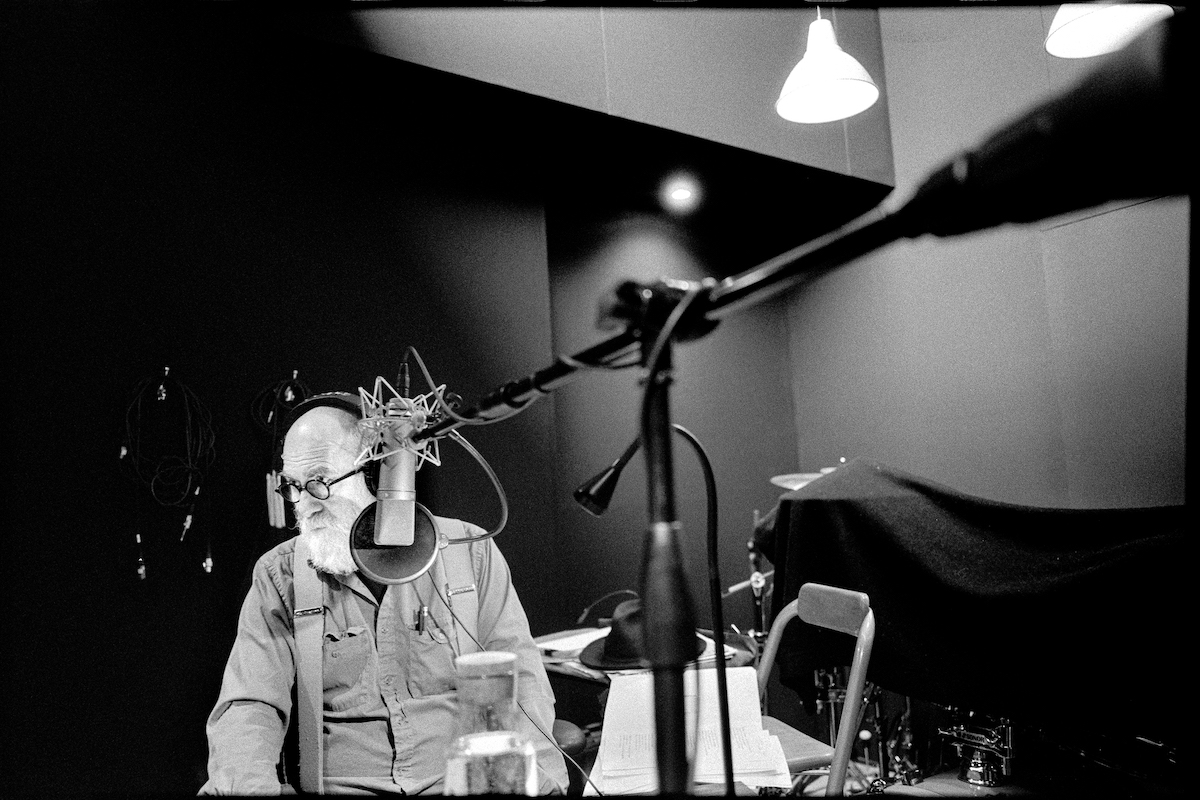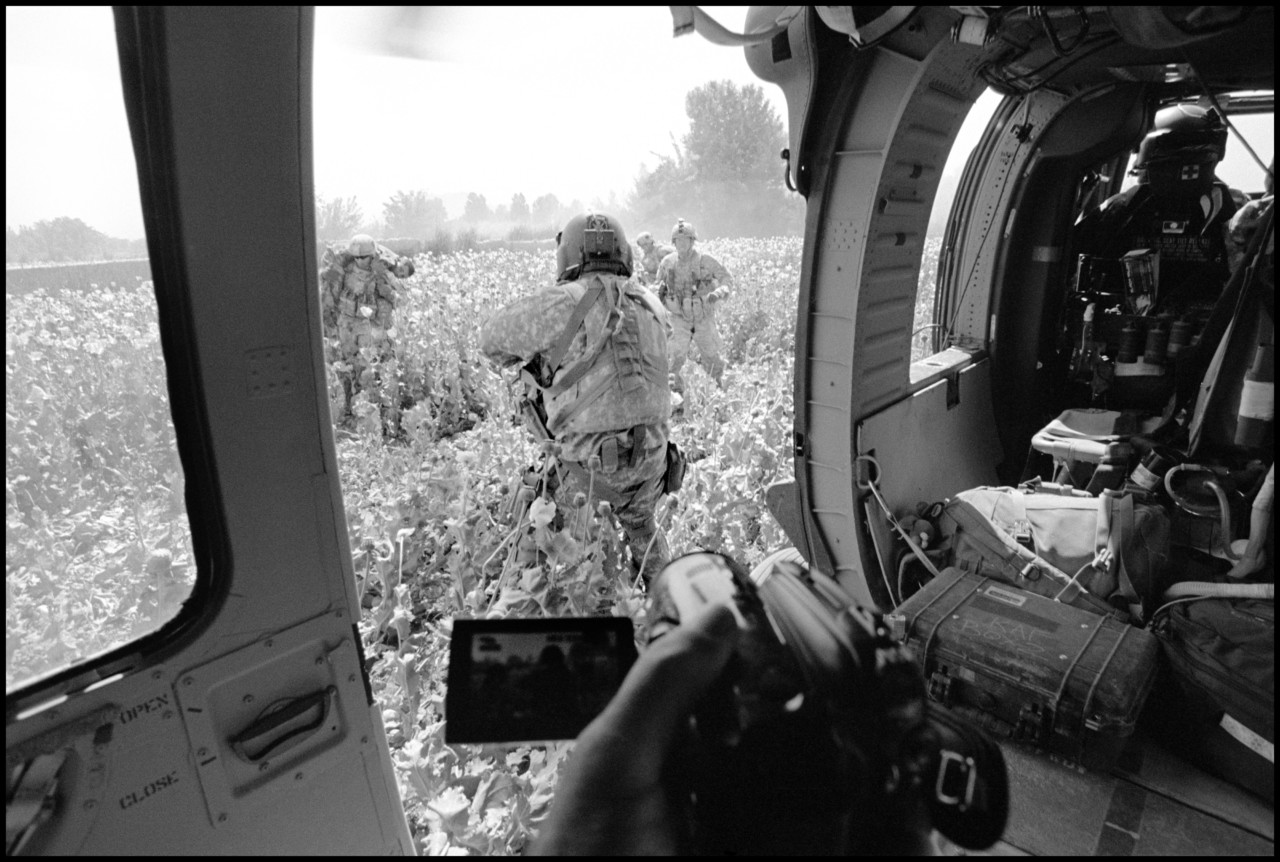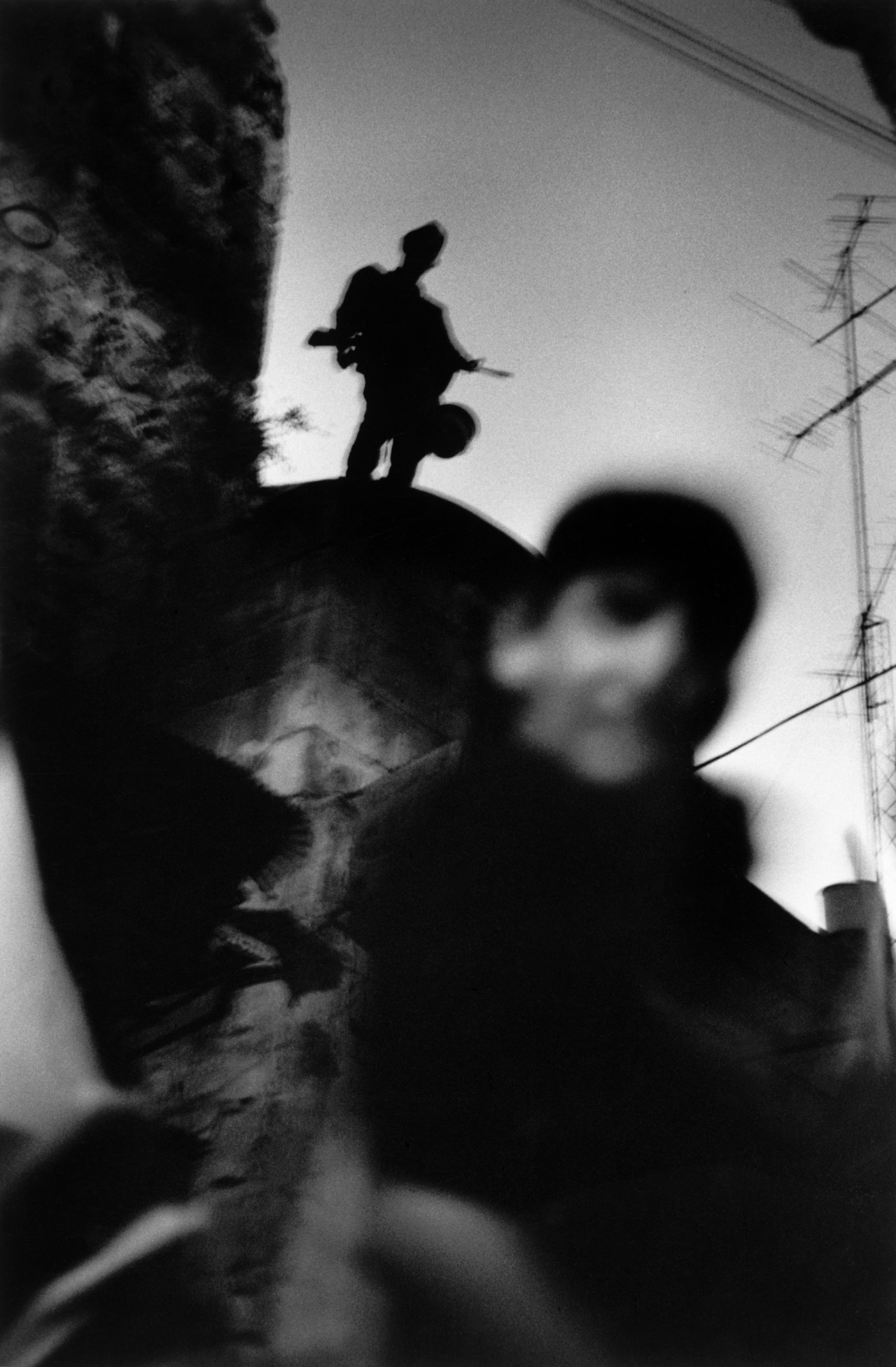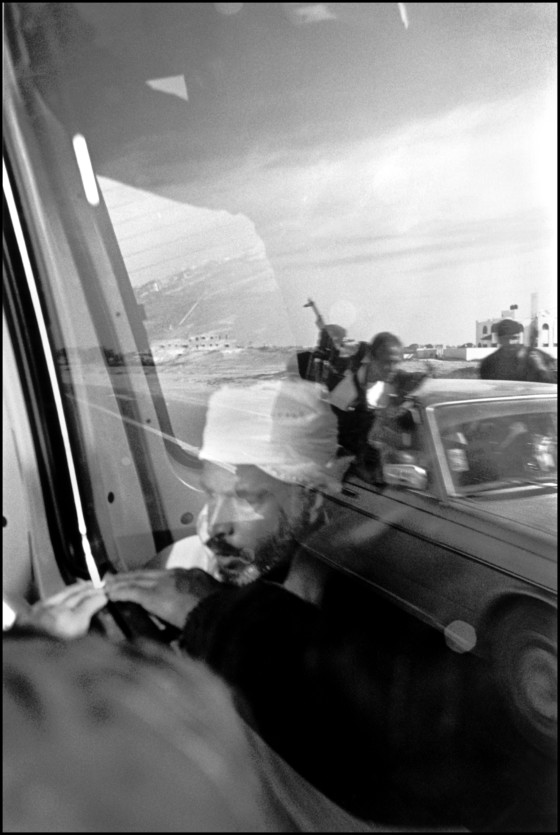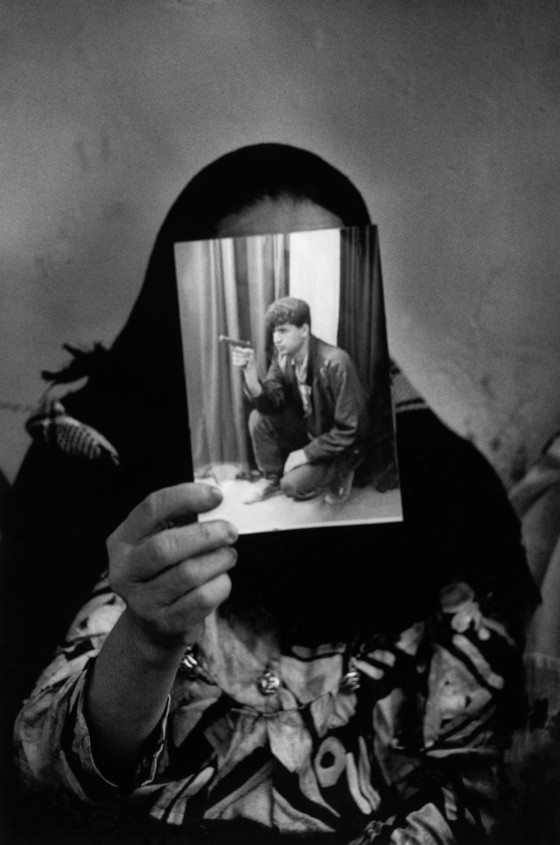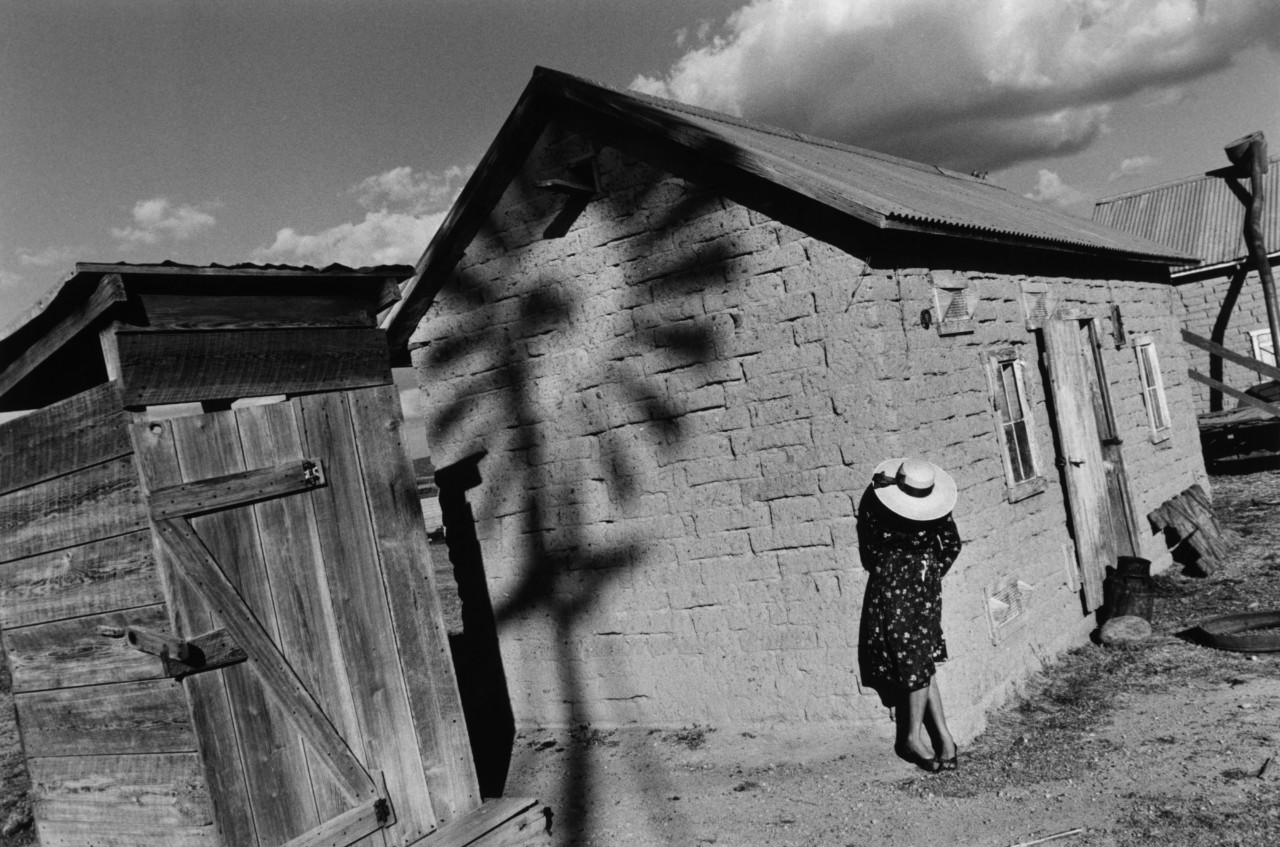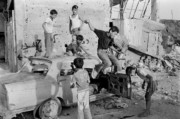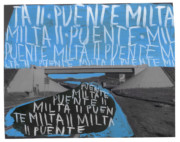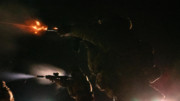Larry Towell’s The Man I Left Behind
Towell's first feature-length documentary, winner of the 2025 NPPA Documentary of the Year and Long Form Awards, traces 40 years of coverage from Central America to Palestine, Afghanistan, Ukraine and Canada
“Definition matters, certainly in the public sphere because people don’t know you personally. And as I learn more about you, your definitions are very varied — you’re a singer, you’re an author, you’re a poet, you’re a photographer, and you’re a filmmaker. Do any of those definitions mean anything to you?” asks Stephen Mayes, former head of the VII photo agency and secretary of World Press Photo, in conversation with Larry Towell for a five-part podcast series on his new feature-length documentary, The Man I Left Behind.
“Well,” replies Towell, “I think I’m all those things, but largely I’m a failure. I don’t think you can be all of those things and do it well full-time. I’ve tried different things to learn the language of storytelling. They’re just different disciplines, but they take you to the same place. And I think as you learn different disciplines, whether extensively or partially, it enriches the other side of what you’re trying to do — it enriches your ability to tell stories.”
Towell’s career as a photographer began in the 1980s, during the years of Ronald Reagan’s presidency. While teaching folk music at night school, he used to throw a camera in his backpack and hitchhike through areas of conflict in Central America. Throughout his career, his urge for storytelling took him from Central America to Palestine, Afghanistan, Ukraine, Mexico and back to his native Canada, focusing primarily on themes of conflict and human rights.
In 1996, he completed a 10-year reportage on the war in El Salvador, which was followed by two books on Palestinians, No Man’s Land and Then Palestine. In the year 2000, a 10-year project documenting Mennonite migrant workers in rural Mexico and Canada was published. A project on his family and his philosophy on land and landlessness followed, under the name The World from My Front Porch, published in 2008. And in 2014, his book Afghanistan, an in-depth look at a country crippled by conflict for decades, was published.
“If there’s one theme that connects all my work, I think it’s that of landlessness,” he once wrote. “How land makes people into who they are and what happens to them when they lose it and thus lose their identities.”
With the advent of digital technology, Towell quickly realized that he could simultaneously capture moving images and audio alongside his still images, which he started to do. “I could record things that no film crew or any large production company ever could, because I was coming across things by accident, the way a still photographer does, with no script, no budget, no assignment,” he explains.
From his documentation of Mennonite communities in rural Canada and Mexico in the 1990s, to the unrest and hardships of daily life in the Occupied Palestinian Territories, to the Maidan Uprising in Kyiv in 2014, the result was hundreds of hours of behind-the-scenes footage documenting the situations and surroundings that he found himself covering.
Forty years later, and he has now released a feature-length documentary of this time and experience capturing conflict and displacement over the decades. Through almost an hour and a half of footage from various moments of his career, and a retrospective narration from Towell himself to tie it all together, he presents an intimate and immersive visual memoir. It is a once-in-a-lifetime kind of œuvre, a culmination of his career to date and careful reflections as a photographer, journalist, and human being.
For Towell, as he explains in episode one of a five-part podcast with Mayes, the footage that he collected over the years was all completely natural, a way of recording small snippets of his experience, but never with a final project or outcome in mind. “It’s just like a little camera in my pocket,” he emphasizes. “I’m just grabbing a moment that is spontaneous, and as I said, can’t be done by a big film crew or by anybody with a certain set of expectations.”
"I didn’t want it to be about me. I wanted it to be about the reasons I photograph the people I’ve met, and the way they have changed my life. "
-
The challenge in turning it into a film, he describes, was bringing everything together into one linear narrative: the still images, the behind-the-scenes footage, the music, and his narration. Towell’s photo reportage has traditionally always been angled toward the outside world, the exterior, becoming a kind of mouthpiece for other people’s stories and experiences. Much of his music, too, recounts stories that he has encountered through the medium of song. Although his voice, perspective and personality form the cornerstone of his work, it is rare that Towell allows his personal life to seep through directly, and his work is a testament to selflessness in storytelling.
“I didn’t want it to be about me. I wanted it to be about the reasons I photograph the people I’m with and the people I’ve met and the way they have changed my life,” he explains. “The problem of course with journalism is that it’s become more about the photographer, the artist, because that’s interesting in the society in which we currently live…we live in a celebrity culture where everybody’s got to be a celebrity, everybody has to have followers.” And yet, with so much raw footage and so many different strands to weave together, the photographer had no choice but to adopt a more personal approach, an unfamiliar exercise for him.
“All these little stories seemed somehow disconnected,” he explains. “My friends, my producer, my editor were questioning me and pushing me saying, it’s not working. You’ve got to put yourself into it more. I realized I had to be the voice. I was the voice, I shot the film, I took the stills, I’m writing the text…I have to be a conduit for other people’s stories.” Together with producer and award-winning film director Matthieu Rytz, and French editor and photographer Hubert Hayaud, the three set out on the incredibly complex task of rifling through the hundreds of hours of footage and stories, and condensing it into one. The result is a groundbreaking, often harrowing, film that places the viewer directly on the ground, next to Towell, as if they themselves were there, in El Salvador, Afghanistan, Palestine, Ukraine, and more.
It has been a busy year and a half for the Canadian photographer, with the release of his three-vinyl LP The Man I Left Behind which features 33 original ballads, the feature-length documentary of the same name which premiered at Visions du Réel festival in Switzerland and is set to be shown at this year’s Visa de L’Image festival in Perpignan on September 7, and his latest photobook, The History War, a book of over a decade of memories in Ukraine.
If anything, this period for Towell is nothing but a testimony to the multiplicity of mediums that he explores and applies in order to tell stories of the people who suffer from conflict, wars, and borders. “Working on the film has been simply the process of expanding my own understanding of storytelling, and it is the other people that make the subjects, it’s about them,” he says to Mayes of the film, after referring to himself, very humbly, as a jack-of-all-trades, master of none.
Listen to the full, five-episode podcast series with Towell and Mayes on Spotify, Apple, or Audible.
“The Man I Left Behind” was awarded the NPPA Documentary of the Year and Long Form Awards in 2025. Screen the documentary today on ARTE.


